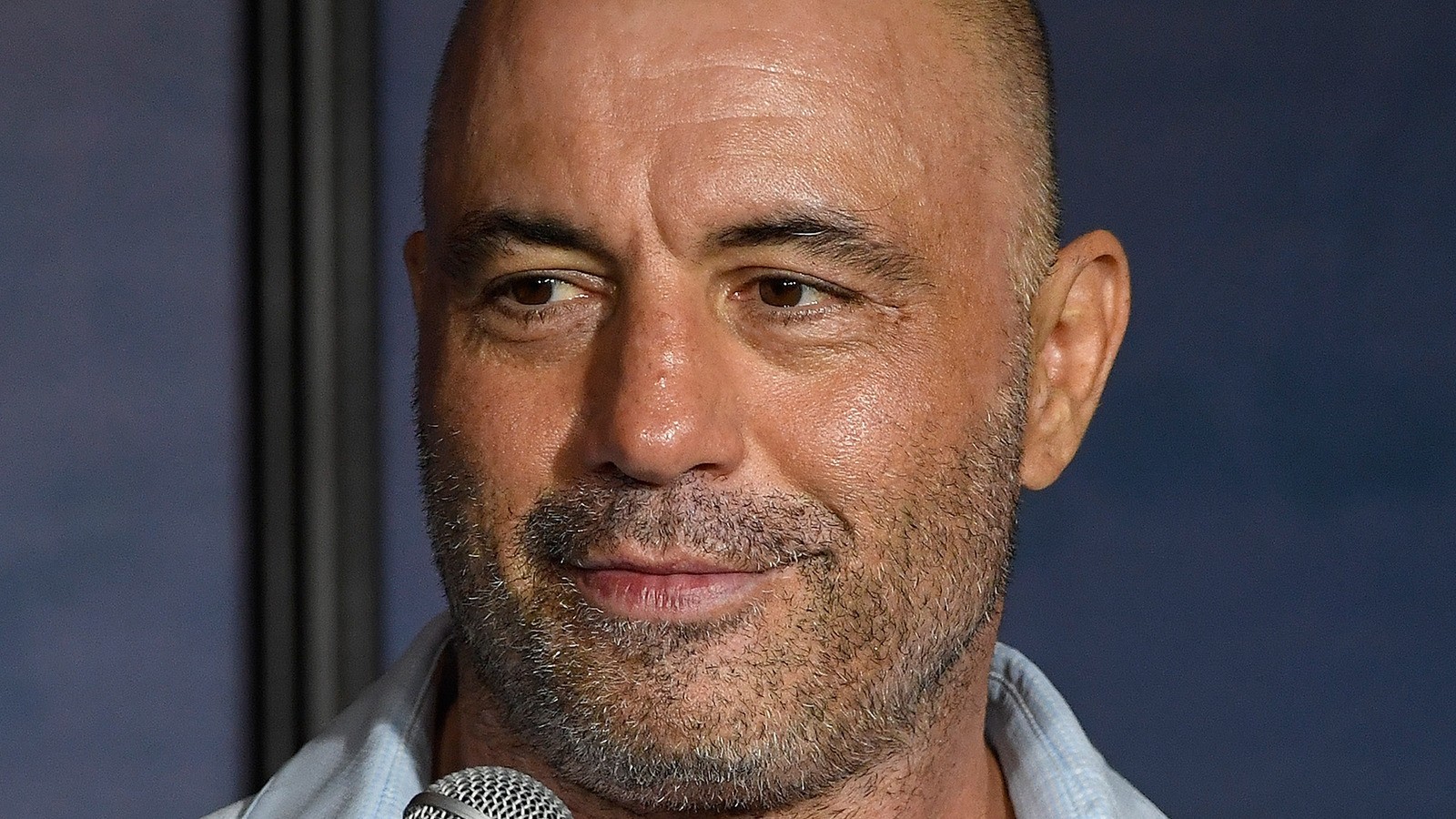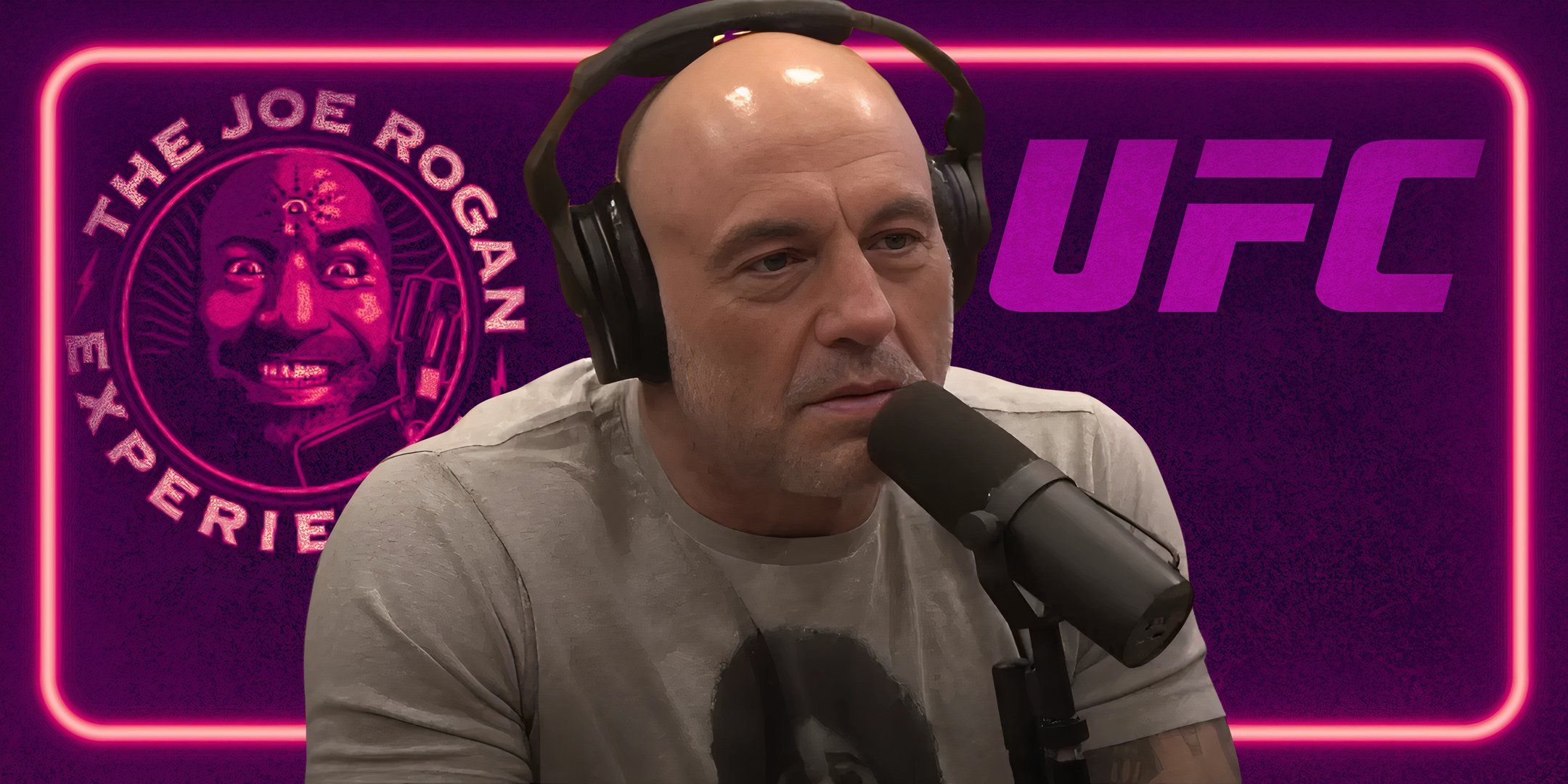What Is The Demographic Of People Who Listen To Joe Rogan? Exploring His Audience
Understanding who tunes into a show like "The Joe Rogan Experience" is, you know, a pretty big deal. It's not just about numbers; it's about getting a sense of the conversations happening, the ideas being shared, and the overall cultural impact of such a widely heard podcast. When we ask, "What is the demographic of people who listen to Joe Rogan?", we're really trying to figure out the makeup of a significant part of the modern media landscape. It's a question that, in a way, helps us see broader trends in how people consume information and entertainment today.
This curiosity about the audience isn't just for, say, advertisers or content creators. For many, it's about seeing if their own listening habits reflect a larger group, or maybe it's about understanding the different perspectives that come together around a single voice. A show with such a vast reach, you know, naturally brings together a wide array of individuals from all sorts of backgrounds. So, figuring out the typical listener profile can be, you know, quite insightful.
In this discussion, we're going to explore some of the general characteristics that often come up when talking about Joe Rogan's listeners. While precise, publicly available real-time data can be a bit hard to come by for any specific podcast, we can certainly look at broader population trends and general observations that give us a pretty good idea. We'll also consider how larger demographic shifts in the country, which, you know, my text highlights, might influence who's listening and why.
Table of Contents
- Joe Rogan's Background
- What is the Demographic of People Who Listen to Joe Rogan?
- Understanding Shifting Listener Trends
- Frequently Asked Questions About Joe Rogan's Audience
Joe Rogan's Background
Before we get into the audience, it's useful to, you know, briefly touch on the person behind the microphone. Joe Rogan is, in a way, a multifaceted personality. He first gained widespread recognition as a stand-up comedian, and then, you know, he became a commentator for the Ultimate Fighting Championship (UFC). His career has, you know, really spanned several different entertainment areas, which perhaps helps explain his broad appeal.
He was also a television host, probably best known for hosting the show "Fear Factor." All these different roles, in a way, gave him a platform and helped him connect with various groups of people. So, when he started his podcast, he already had a significant following, which, you know, helped it grow very quickly.
The podcast itself started in 2009 and has, you know, since become one of the most listened-to shows in the world. It's known for its long-form conversations, often lasting several hours, with a wide variety of guests. These guests range from scientists and authors to fellow comedians, politicians, and, you know, even mixed martial artists. This variety, it's almost, contributes a lot to its broad appeal.
Personal Details and Biography
Here are some basic details about Joe Rogan, you know, for context:
| Full Name | Joseph James Rogan |
| Birth Date | August 11, 1967 |
| Birthplace | Newark, New Jersey, United States |
| Occupation | Comedian, Podcaster, UFC Commentator, Actor |
| Notable Work | The Joe Rogan Experience (Podcast), UFC (Commentator), Fear Factor (Host) |
What is the Demographic of People Who Listen to Joe Rogan?
When trying to pin down the typical listener for a show like Joe Rogan's, it's, you know, a bit like trying to catch smoke. His audience is incredibly large and, in a way, very diverse. However, based on general observations and, you know, some industry reports about podcast listenership, we can put together a pretty good picture. My text, for example, helps us think about the broader population shifts that might influence who listens to what, and that's really helpful context.
We often hear general descriptions, but it's important to remember that these are, you know, broad strokes. A show with millions of listeners will naturally have people from all walks of life. Still, certain patterns tend to emerge, and that's what we're going to explore here, using general demographic insights from my text to frame our thoughts about a large, popular audience.
The discussions on the podcast cover such a wide range of topics, from science and philosophy to current events and comedy. This broad appeal means that, you know, different people might tune in for different reasons. Some might be interested in the guests, while others, you know, might just enjoy Joe's conversational style. This variety, in a way, makes the audience profile quite interesting to look at.
Age Groups and Listener Profiles
When it comes to age, many reports suggest that the core of Joe Rogan's audience tends to be, you know, on the younger side of adult listeners. We're often talking about people in their late teens, twenties, and thirties. This group is, you know, typically very active in the podcast space, always looking for new content and, you know, engaging with long-form discussions.
However, it's not exclusively a young person's show. My text mentions that, as of 2023, 18% of people are 65 and older, showing that the population is aging. This changing demographic, you know, means that there's a growing segment of older individuals who are also online and exploring digital content. So, while the younger crowd might be the biggest chunk, you know, you'll definitely find listeners from all age groups, including older folks, tuning in.
The nature of the show, with its long, in-depth conversations, might also appeal to people who have more time to listen, or those who, you know, prefer to consume content while doing other activities. So, in some respects, age can influence how and when people listen, and that's a fascinating aspect to consider.
Younger listeners might, you know, find the show through social media or recommendations from friends, while older listeners might discover it through news articles or, you know, perhaps even a specific guest. It's almost like a tapestry of discovery, with different threads leading people to the same podcast. This blend of age groups, you know, makes the overall demographic quite rich.
Racial and Ethnic Composition
When we consider the racial and ethnic makeup of Joe Rogan's audience, it's, you know, important to think about the broader population. My text points out that the ages, races, and population density of the United States tell a story, and you know, understanding these shifts in demographic trends is key. While specific racial data for his audience isn't usually public, general podcast listenership trends in the U.S. can give us clues.
Typically, podcasts in the U.S. have seen a significant listenership among white audiences, but, you know, listenership is growing across all racial and ethnic groups. My text also talks about demographics across Asian ethnicities, from Indian Americans to Laotian Americans, revealing differences in everything from educational attainment to family size. This, in a way, highlights the rich diversity within specific groups, which, you know, could also be reflected in a large audience like Rogan's.
It's fair to assume that, you know, given the show's massive popularity, it draws listeners from a wide range of backgrounds. While some content might resonate more with certain groups, the sheer variety of guests and topics means that, you know, people from all races and ethnicities could find something interesting to listen to. So, you know, it's likely a pretty diverse mix.
The fact that the show covers so many different topics, some of which are, you know, quite niche, means that it can attract people from various walks of life who might not typically listen to the same things. For example, a discussion on martial arts might draw one group, while a talk about science might draw another, and, you know, this contributes to a broad racial and ethnic composition.
Geographic Distribution and Population Density
As for where Joe Rogan's listeners are located, the majority are, you know, likely in the United States, given his primary language and cultural context. My text specifically mentions the ages, races, and population density of places like Alaska, Baltimore City, Maryland, and Riverside County, California, which, you know, tells a story about local populations. These localized insights remind us that even within a country, demographic profiles can vary a lot.
While his show is global, with listeners from all over the world, the core audience is, you know, probably concentrated in North America. Within the U.S., it's reasonable to think that listeners are spread across both urban and rural areas. However, larger population centers, you know, tend to have more people, so it's possible that a higher number of listeners might come from more densely populated regions.
My text also highlights that the ages, races, and population density of the United States generally tell a story. This suggests that understanding where people live and how densely populated their areas are can, you know, give us clues about media consumption habits. People in different areas might have different interests or access to different types of content, so this is, you know, an important factor.
The show's availability on major podcast platforms means that, you know, anyone with an internet connection can tune in. This broad accessibility means that, in a way, the audience isn't limited by traditional media distribution methods. So, you know, you can find listeners from nearly any corner of the globe, even if the biggest concentration is in his home country.
Gender Dynamics in Listenership
When it comes to gender, podcast listenership in general has, you know, historically shown a slight lean towards male audiences, especially for certain genres like comedy, news, and sports commentary. Joe Rogan's show, with its often male-dominated guest list and topics that, you know, sometimes lean into traditionally male interests, is often perceived to have a predominantly male audience.
My text, interestingly, points out that female voters voted at a higher rate than male voters in 2024, at 61.0%. This was, you know, a continuation of a trend. While this specific data point is about voting, it does, in a way, show that women are very engaged in public life and, you know, in consuming information. So, while the perception might be a male-heavy audience for Rogan, it's important not to, you know, completely discount female listeners.
Many women do listen to the show, drawn by the diverse range of guests, the long-form discussions, or, you know, specific topics that resonate with them. It's not as simple as just saying it's a "male podcast." There's a significant female listenership that, you know, often gets overlooked in general discussions. So, you know, the gender split is probably more balanced than some might assume.
The show's popularity means that, you know, it transcends simple gender lines. While certain topics might attract more men, others, like discussions on health, consciousness, or, you know, personal development, can appeal to anyone, regardless of gender. This broad appeal means that, in a way, the audience is more mixed than a quick glance might suggest.
Socioeconomic and Educational Insights
Gathering precise socioeconomic data for a podcast audience is, you know, notoriously difficult without direct surveys. However, we can make some educated guesses based on general trends in podcast consumption. Podcasts, in general, tend to attract an audience that is, you know, somewhat educated and often has a disposable income that allows for the technology needed to listen.
My text mentions that demographics across Asian ethnicities reveal differences in everything from educational attainment to family size. This highlights that, you know, educational backgrounds can vary greatly within the population, and this variation would certainly be reflected in a large audience like Rogan's. People from all educational levels, you know, listen to podcasts.
While there's no specific data in my text about Rogan's audience income levels, the broad appeal of his show suggests that it's not limited to any single economic bracket. People from all walks of life, you know, whether they are students, working professionals, or retired individuals, can and do listen. So, in some respects, it's a very inclusive audience in that regard.
The show's focus on long-form discussions and, you know, often complex topics might suggest an audience that values intellectual curiosity and, you know, critical thinking. This doesn't necessarily mean a high level of formal education, but rather, you know, a general interest in learning and exploring different ideas. So, you know, the socioeconomic profile is likely quite varied.
Understanding Shifting Listener Trends
The world of media consumption is, you know, always changing, and podcast listenership is no exception. My text talks about understanding the shifts in demographic trends with charts visualizing decades of population data, and, you know, this really applies to podcast audiences too. What was true a few years ago might not be, you know, entirely accurate today.
For example, my text points out that the share of households led by parents with children decreased in 2023, continuing a decades-long trend. This kind of shift in family structure could, you know, subtly influence who has time for long podcasts or what topics they might be interested in. It's a small detail, but, you know, it contributes to the bigger picture.
Also, the increasing availability of podcasts on various platforms, from smartphones to smart speakers, means that, you know, more people than ever can access them. This expansion of access naturally broadens the demographic reach of popular shows like Joe Rogan's. So, in a way, the audience is always growing and changing, which is, you know, pretty cool to see.
The topics discussed on the podcast also, you know, sometimes reflect current events and societal shifts. For instance, my text mentions that Black and Indigenous peoples had the highest fentanyl overdose rates of any racial demographic. While this is a serious public health issue, it's the kind of topic that, you know, might be discussed on a show like Rogan's, drawing in listeners who are personally affected or interested in these societal challenges. This relevance keeps the audience engaged, you know, and helps it evolve.
My text also notes that the largest population of unhoused people, you know, made up 13.7% of the U.S. population in 2023. This kind of social data, while not directly about podcast listening, reminds us of the diverse life experiences within the broader population. A show with such a wide reach might, you know, even touch upon these issues, potentially drawing in listeners from all walks of life, which is, you know, something to consider.
For more general insights into podcast listenership across the country, you could look at reports from organizations that track media consumption. These reports, you know, often provide broad strokes of who is listening to podcasts in general, which can then be, you know, used to infer about specific popular shows. Learn more about on our site, and link to this page for more on general demographic trends.
Frequently Asked Questions About Joe Rogan's Audience
Is Joe Rogan's audience mostly male?
While there's a common perception that Joe Rogan's audience is, you know, primarily male, the reality is a bit more nuanced. While men might form a larger segment, there's a significant portion of female listeners who, you know, tune in regularly. The show's broad range of topics means it appeals to a wide variety of interests, regardless of gender. So, you know, it's not exclusively one gender.
What age group listens to Joe Rogan the most?
The largest portion of Joe Rogan's audience is, you know, generally considered to be adults in their late teens, twenties, and thirties. This age group is, you know, very active in the podcast space. However, the show also has a substantial number of listeners in older age brackets, as, you know, more and more people from all generations are discovering podcasts. So, you know, it's a pretty wide age range.
Where are most Joe Rogan listeners located?
Most of Joe Rogan's listeners are, you know, likely located in the United States, given his background and the primary language of the podcast. However, "The Joe Rogan Experience" has a massive global reach, with listeners tuning in from, you know, countries all over the world. So, while the U.S. might be the largest concentration, it's, you know, truly an international audience.

How Many People Listen To Joe Rogan's Podcast?

Joe Rogan Explained His Controversial Statement While Laughing About

The Truth About Joe Rogan's Mysterious Personal Life